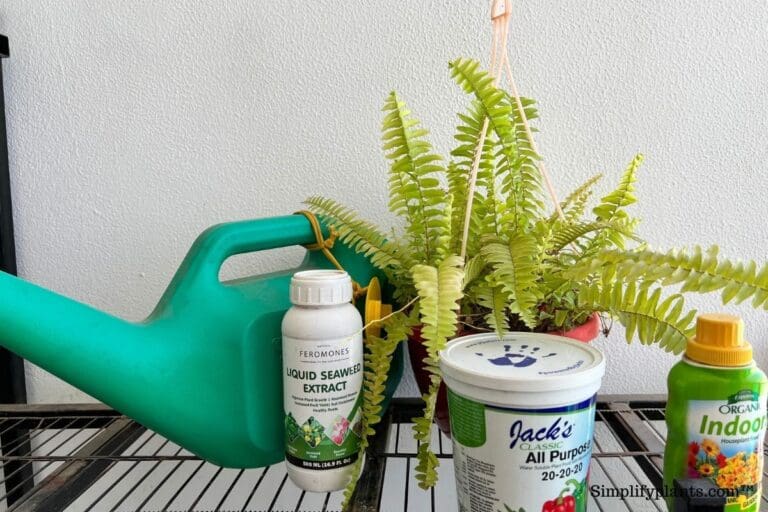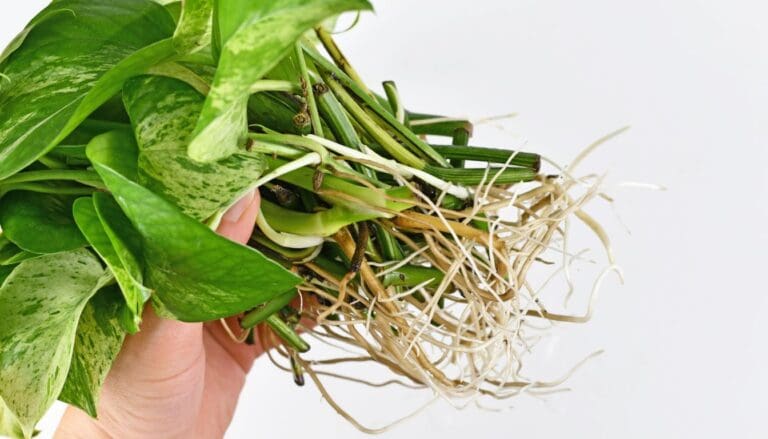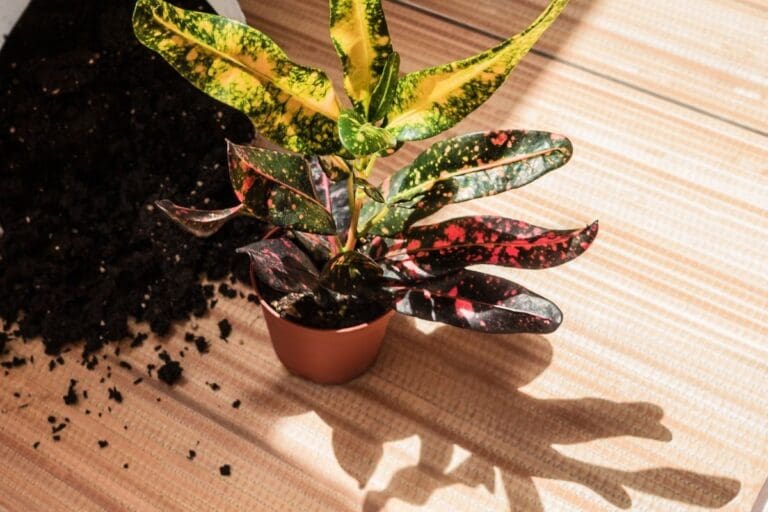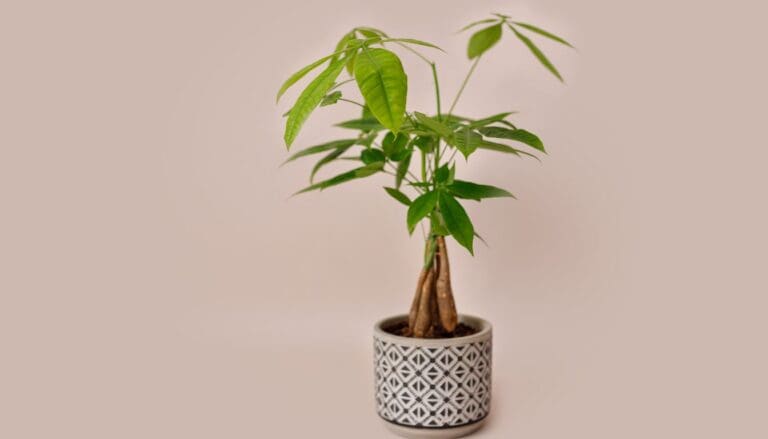How To Prune Peperomia? (A Step-By-Step Guide)
Peperomia or the radiator plant is considered a low-maintenance plant as it grows slowly and doesn’t require much pruning. While many of your houseplants will call out for regular pruning, peperomia will do well with occasional pruning.
This is because peperomia is a slow-growing plant, so it takes time for it to grow big or uneven. But when the time comes you must be aware of how to prune your peperomia correctly.
To prune your peperomia correctly, decide the unwanted growth you want to prune and pick a sharp pruner and sterilize it first. Now cut at a 45-degree angle on the stem that you want to prune. Prune all the unwanted growth but don’t go beyond 20%. You can also pinch off the dead leaves by hand.
It is a good idea to water the plant before you prune it as a hydrated peperomia will recover faster.
Always make a clean cut whenever you are pruning your houseplants. Making clean cuts prevents damage and encourages healthy growth.
This article will discuss how to prune your peperomia plant and all the information you might need.

Please note: Simplify Plants is reader-supported. Some links in the post are affiliate links and I get a commission from purchases made through links in the post.
Does your peperomia require pruning?
Pruning should be a part of your plant care routine. Pruning is required to keep the plants in shape and to get rid of damaged parts.
Peperomia will not require frequent pruning as it is a slow-growing plant. It will take time to overgrow.
You should prune your peperomia if you notice overgrowth or uneven growth.
There are other benefits or reasons for pruning your peperomia. Let’s discuss those.
1. Keeps the plant in shape
Peperomia will take its sweet time to grow large and messy. But when it does, you need to be ready with your pruners to get rid of the excess growth.
Not pruning the peperomia will make the plant messy, ruining the aesthetics of your space.
Pruning the overgrowth and uneven growth is a good practice that will keep the plant compact and let it stay in the best shape.
2. Remove the damaged and dead parts

Another important function or benefit of pruning is that you can get rid of damaged and dead parts with the help of pruning.
It is natural for some leaves or stems to die, and let them stay on the plant will only increase the burden of the plant.
Therefore, you should always remove the dead parts to make space for new ones.
Often houseplants develop diseases and get damaged due to some external force. Keeping the affected parts will add more stress to the plant. Trim these affected parts to reduce stressing your peperomia.
3. Boost the growth of the plant

Pruning peperomia can boost its growth. Although peperomia is a slow grower, consider giving it a trim if you feel that your peperomia is growing slower than average.
However, do not go overboard with this. Severe pruning can permanently damage your peperomia.
Also read: Why Is My Peperomia Not Growing? (Causes+How To Fix)
4. Make the peperomia bushier

Many houseplant owners love to prune their plants to encourage bushy growth. You can try that for your peperomia also.
You can trim the tips of a stem that will then release the growth hormone to encourage the growth of side stems.
You can either use pruners or your fingers to pinch the tips of the stems.
5. Change the growth direction
If your peperomia is growing more on one side than the other, pruning can help you fix it.
This happens when you rotate your plant, and one side gets more light than the other side. In such a case, you can prune the side that has overgrown.
This will make the plant even. And if you rotate the plant so that it gets even light distribution, you will have balanced growth on all sides of your peperomia.
6. Fix root rot

Pruning is not done only on top of the soil. If your peperomia is experiencing root rot, a fungal disease caused mainly due to overwatering; you would need to prune the roots to fix the issue.
In root rot, the roots get severely damaged and turn brown and mushy. Not pruning the affected roots will only lead to the spread of the infection to the healthy roots. This will eventually kill the peperomia.
To avoid all these, you must prune the affected roots and destroy them.
Don’t forget to disinfect the pruners after pruning the infected roots.
7. Get rid of the leggy growth

If your peperomia has grown tall with only a few leaves on them, the plant has become leggy.
This happens due to a lack of light. When your peperomia doesn’t get enough light, it is unable to produce its energy or food. This leads to tall and weak growth and less leaf growth.
Before you amend the lighting conditions, you must prune the leggy parts of the peperomia plant.
Which parts of the peperomia should you prune?
Now let’s look at the parts that you must prune.
- Dead leaves and stems.
- Leggy stems.
- Stems with plain-colored leaves in case of variegated peperomia.
- Discolored and brown leaves.
- Diseased roots, stems, and leaves.
- Crowded stems.
- Top of the main stem to stop overgrowth.
- Tips of the stems to make the peperomia bushy.
How to trim a peperomia plant?
Now that you know why and what to prune, let’s get down to how you can prune your peperomia.
But before that, grab all the ingredients so that you don’t have to run and find things in between the pruning.
You will need:
- Sharp and sterilized pruners
- Disinfectant
- Cotton ball
- Your peperomia
Before getting started, pour disinfectant on the cotton balls and sterilize your pruners. This will help avoid any infections.
You can use rubbing alcohol as a disinfectant. After applying it, rinse it and let the pruners dry.
Water your peperomia the night before you plan on pruning it. A hydrated plant will recover fast from the pruning.
You can follow these simple 5 steps to prune your peperomia like a pro:
Step 1: Identify the area you want to prune
Inspect your peperomia thoroughly and decide the areas you want to prune.
Find out all the leggy, damaged, dead, or uneven growth. You can even mark them with chalk so that you don’t forget any.
Step 2: Prune the unhealthy parts
Unhealthy parts indicate the yellow leaves, brown leaves, discolored foliage, broken stems, etc.
Letting these remain on the peperomia will act as a burden. Therefore, prune these parts to conserve some energy from your peperomia.
Step 3: Prune the dead parts
Other than the unhealthy parts, you will notice dead leaves or stems on your peperomia. These will eventually fall off but removing them if you see them is a good idea.
Pruning of the dead and damaged parts is called softwood pruning.
Step 4: Remove excess growth and encourage new growth
Removing excess growth is the best way to control overgrowth.
You can encourage new growth by pruning right before a leaf node. While pruning a stem, cut close to the main stem.
Step 5: Prune to propagate
The healthy parts of the peperomia that you have pruned don’t need to be disposed of. You can propagate those to get new plants.
You can place these cuttings in water or soil and wait for them to grow roots. Once the roots grow long enough, you can transplant the cutting into a pot filled with a well-draining potting mix.
Tips for pruning your peperomia

- Don’t prune more than 20 to 25% at once as that can stress the peperomia.
- Use garden gloves as pruning can be a messy process.
- Hold the pruners at a 45-degree angle to make the cutting.
- Water the peperomia thoroughly after pruning it to reduce stress.
- Disinfect the primers before and after pruning.
When to prune a peperomia?
The best time to prune your peperomia is between spring and summer. The sun shines bright and provides warm weather conditions for the plant to recover fast from pruning stress.
However, if required, you can prune the peperomia during other times of the year also.
What happens if you don’t prune your peperomia?
If you don’t prune your peperomia, you might come across any of these:
- Leggy growth
- Stunted growth
- Messy and uneven growth
- Crowded stems
Peperomia doesn’t require frequent or excessive pruning. Pruning it occasionally to get rid of the unhealthy and uneven growths will be sufficient.
Final words

Prune your peperomia only when required and not too frequently as that will stress the plant. To sum everything up:
Prune the peperomia in the spring and summer months. Prune the leggy parts, the overgrowth, dead leaves and stems, and diseased areas. The best thing is that you can propagate healthy cuttings without having to dispose of them.
Water the peperomia a night before you prune it. And water it after pruning. This will save the plant from the stress of pruning. If you prune more than 25%, the plant can have a shock! So do not overdo it.
Prune with sterilized pruners or garden shears and make a 45 degrees angle when cutting. Make clean cuts as that will encourage healthy growth.
Besides pruning, provide bright and indirect sunlight, proper fertilization, and water when the topsoil dries out. Rotate the plant every month to ensure it gets light on all sides. Change your care routine in winter to protect the plant from low temperature, cold drafts, and frost.
Ref: University of Florida, Sage Journal, University of Vermont, New Jersey Agricultural Experiment Station Rutgers, The University of Arkansas, Britannica, Wikipedia, Peperomia Diseases, NC State University.
Recommended Garden Supplies
| Product Image | Our Recommended Gardening Supplies | Check Offers! |
|---|---|---|
Top Top
Top
Top
Top
Top
Top
Top
Top | rePotme Houseplant and Tropical Classic Potting Soil Mix | Check Offer On Amazon |
 Top
Top
Top
Top
Top
Top
Top
Top | Espoma Organic Indoor Plant Food | Check Offer On Amazon |
 Top
Top
Top
Top
Top
Top
Top
Top | GooingTop LED Grow Light 6000K Full Spectrum Clip Plant Growing Lamp | Check Offer On Amazon |
 Top
Top
Top
Top
Top
Top
Top
Top | Soil Moisture Meter | Check Offer On Amazon |
 Top
Top
Top
Top
Top
Top
Top
Top | Govee Hygrometer Thermometer, Bluetooth Enabled! | Check Offer On Amazon |
 Top
Top | LEVOIT Humidifiers for Large Room(Best For Plants) | Check Offer On Amazon |
 Top
Top
Top
Top
Top
Top
Top
Top | Upgraded DIY Automatic Drip Irrigation Kit, 15 Potted Houseplants Support | Check Offer On Amazon |
 Top
Top
Top
Top
Top
Top
Top
Top | Stainless Steel Heavy Duty Gardening Tool Set | Check Offer On Amazon |
 Top
Top
Top
Top
Top
Top
Top
Top | Bonide Insecticidal Soap | Check Offer On Amazon |
 Top
Top
Top
Top
Top
Top
Top
Top | Bonide 32 oz Spray Neem Oil for Organic Gardening | Check Offer On Amazon |
 Top
Top
Top
Top
Top
Top
Top
Top | Garden Safe Fungicide | Check Offer On Amazon |







Hi! My little peperomia is not happy. I’ve been away a lot lately and it has been under watered and it’s also very dry where I live in this season. It has 3 stems that are leggy and only have leaves on the ends. But there is a small stem with new growth. I was thinking of removing the old leggy stems and just keeping the younger one but that would be removing well beyond 20% of the plant. If you have any advice it would be greatly appreciated.
Thank-you 💖🌱
Hello!
It sounds like your peperomia is ready for a little TLC! Leggy stems often result from inadequate light, so consider moving it to a brighter spot. Pruning is a good idea – don’t worry too much about the 20% rule in this case. Go ahead and trim the leggy stems to encourage bushier growth from the healthier parts. Ensure you’re watering it just enough to keep the soil slightly moist and consider a humidifier or pebble tray to boost humidity. With a bit of care, your peperomia should bounce back beautifully!
Cheering on your peperomia’s comeback! 🌱✂️💧